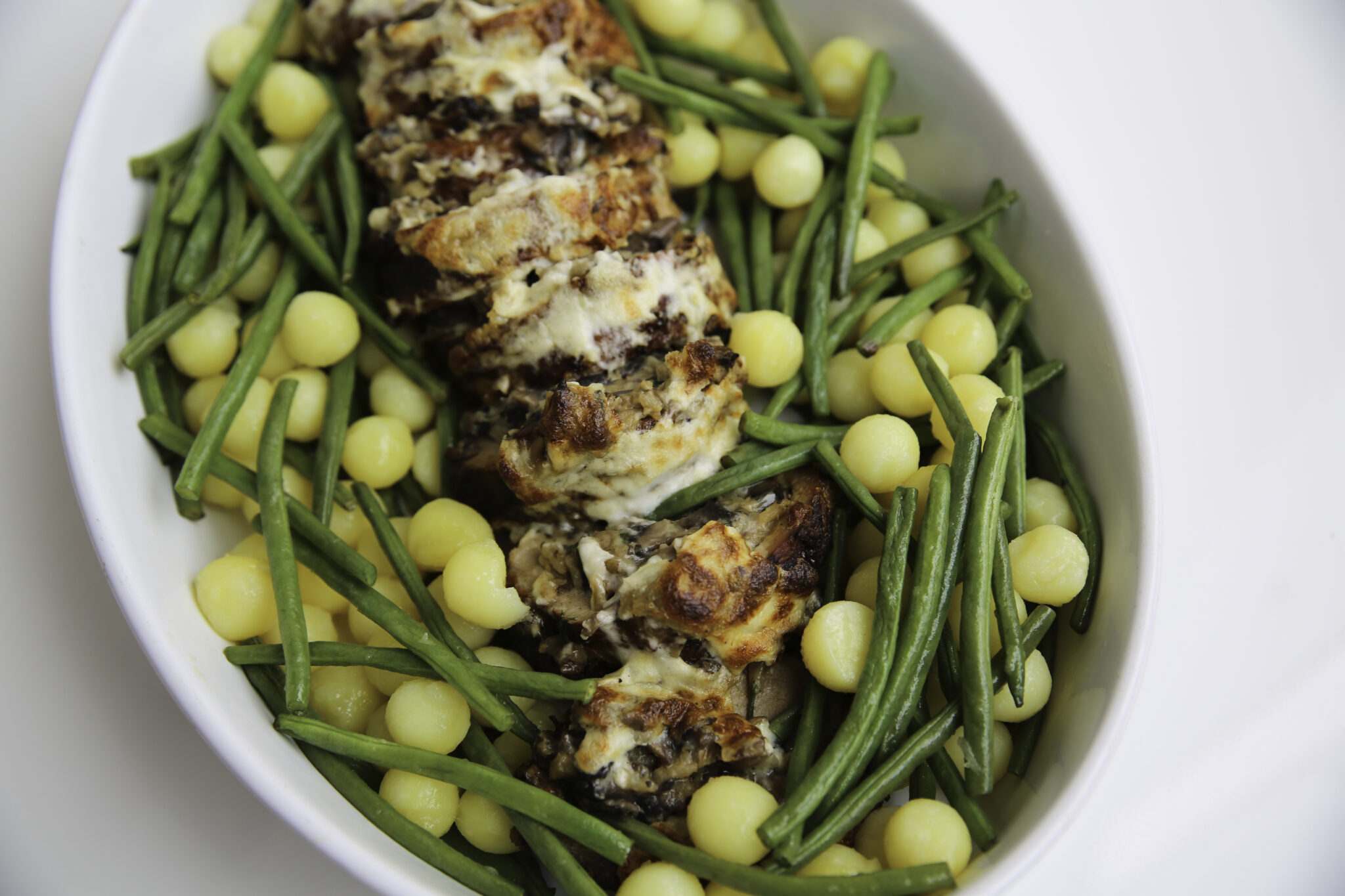Veal Orloff
This post contains affiliate links, including links from the Amazon Associates programs. These links will direct you to products I recommend for further exploration and enjoyment of the topics I cover on my website and in my lectures. See more in the Privacy Policy below.
Why Veal Orloff is a Handy Trick Up Your Sleeve
Every cook needs a flashy recipe in their back pocket: something lying at the tricky intersection of reliable and impressive: something to produce when meeting the in-laws for the first time, or entertaining the boss during bonus season.
Veal Orloff, or “French veal” as the Russians call it, is an excellent choice, featuring the dynamic duo of veal and mushrooms and so much butter and cream!
Why Veal Orloff is a Keeper
- It’s impressive when brought to the table whole.
- Veal Orloff is elegant, but also satisfyingly comforting.
- Veal Orloff can be a conversation starter.
- Veal Orloff will let your guests know you went to a lot of trouble for them.
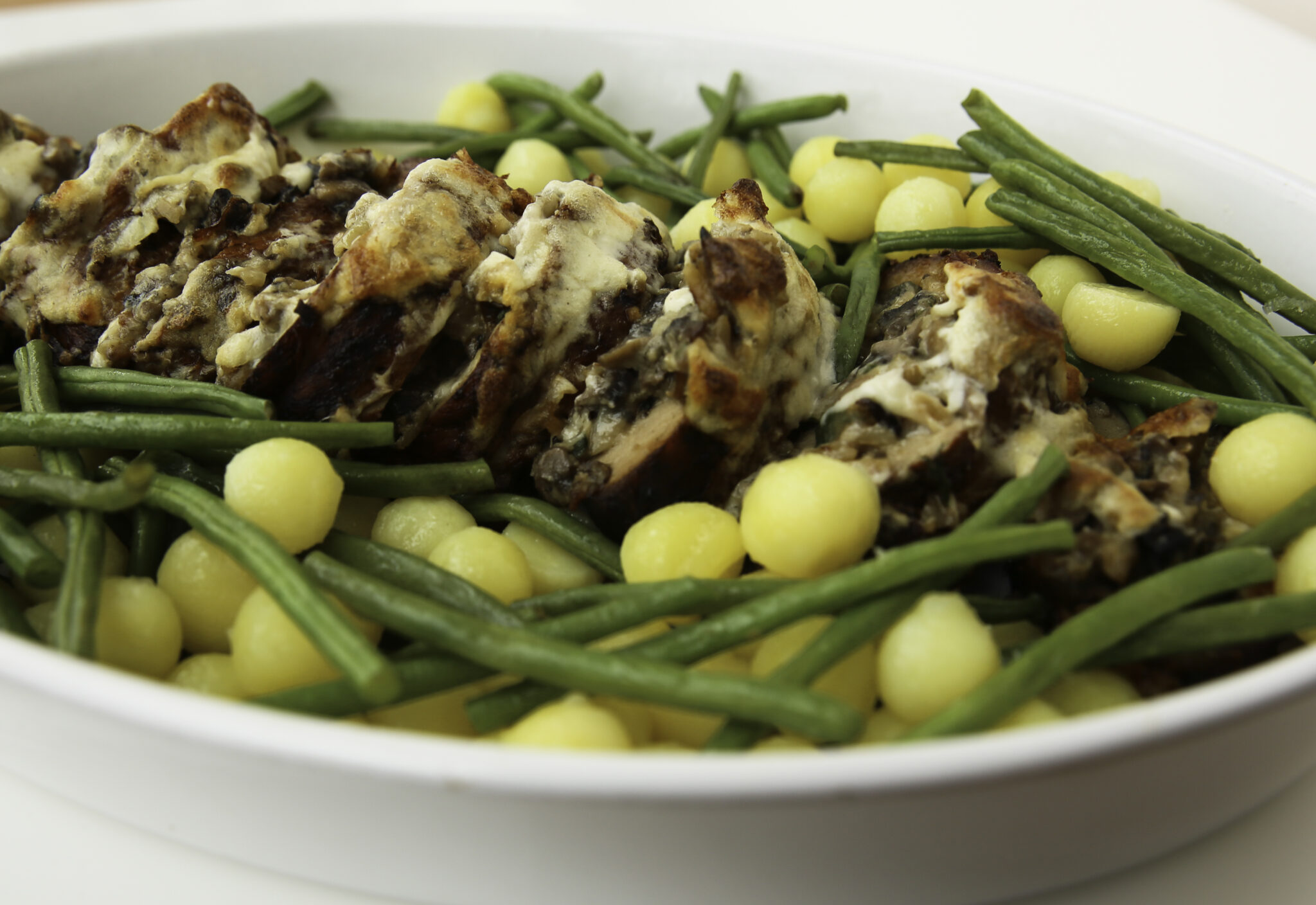
How Veal Orloff Became an American Classic
Thanks to Julia Child and Betty White, Veal Orloff is firmly ensconced in the American consciousness. Julia Child — that famous expatriate chef — first introduced Americans to the rich saddle of veal stuffed with mushrooms.
And Americans of a certain kind did what Julia told them to: they made Veal Orloff a showy dinner party piece in the 1960s.
Betty White and Veal Orloff
And who was more showy in the kitchen than Sue Ann Nivens, that annoying but accomplished “Happy Homemaker” on the Mary Tyler Moore show, played by Betty White?
Veal Orloff entered the main stream American consciousness in one memorable episode of the show. Mary is forced to organize a dinner party on brief notice for a visiting congresswoman. Never a natural homemaker, Mary persuades Sue Ann to do the cooking.
Betty White steals the scene below, as she puts the Veal Orloff’s needs ahead of everyone else’s.
Veal Orloff’s Ingredients
Veal Orloff has four components: the saddle of veal, the filling or “soubise” a duxelles of mushrooms, and a classic Mornay Sauce.
Veal Orloff: The Saddle of Veal
- Boneless saddle of veal
- Celery
- Carrots
- Yellow Onion
- Bouquet Garni
- Dry White Wine
Veal Orloff: The Soubise
- Long grain wild rice
- Onions
- Butter
- Nutmeg
- Chicken stock
Veal Orloff: The Duxelles
- Shallots
- Mushrooms
- Heavy Cream
- Madeira
Veal Orloff: The Mornay Sauce
- Whole Milk
- Flour
- Hard Swiss Cheese such as Gruyere
- Nutmeg
- Cayenne pepper
- Whipping Cream
Veal Orloff: The Process
Veal Orloff is famously fussy, but if you break the recipe down into four separate components, three of which can be made ahead of time, it becomes far more manageable.
Step # 1: Roll and Brine the Veal
Roll the veal roast into a tight roll and tie it with butcher’s twine. Brine the veal in a solution of water and salt for at least 1 hour.
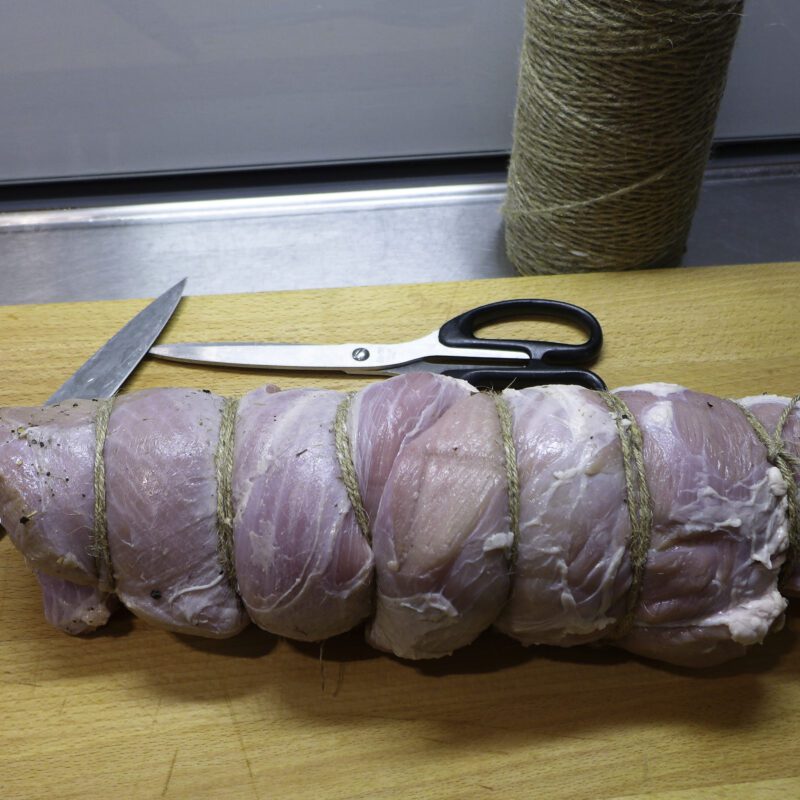
Step # 2: Sear and Roast the Veal
After the veal is brined, the next strep is to brown the roast in butter, then braise it with vegetables.
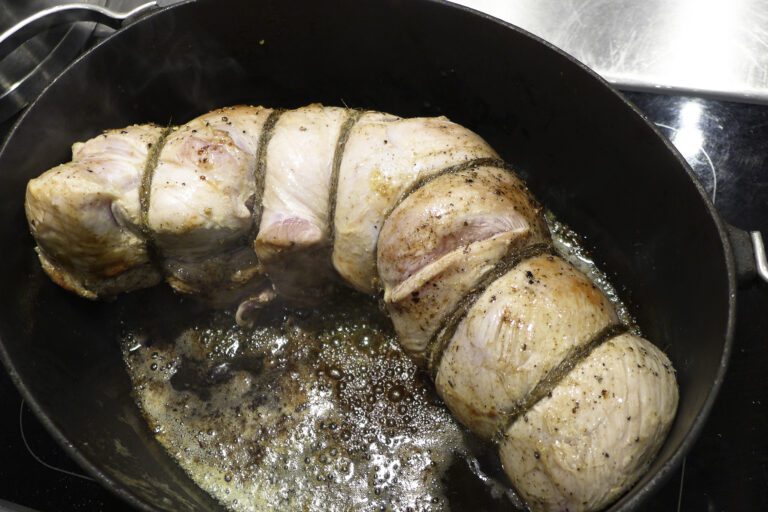
Step # 3: Make the Soubise
While the veal is braising, there is ample time to make the soubise and duxelles, or you can make these ahead of time.
For the soubise, rice and onions are cooked until soft.
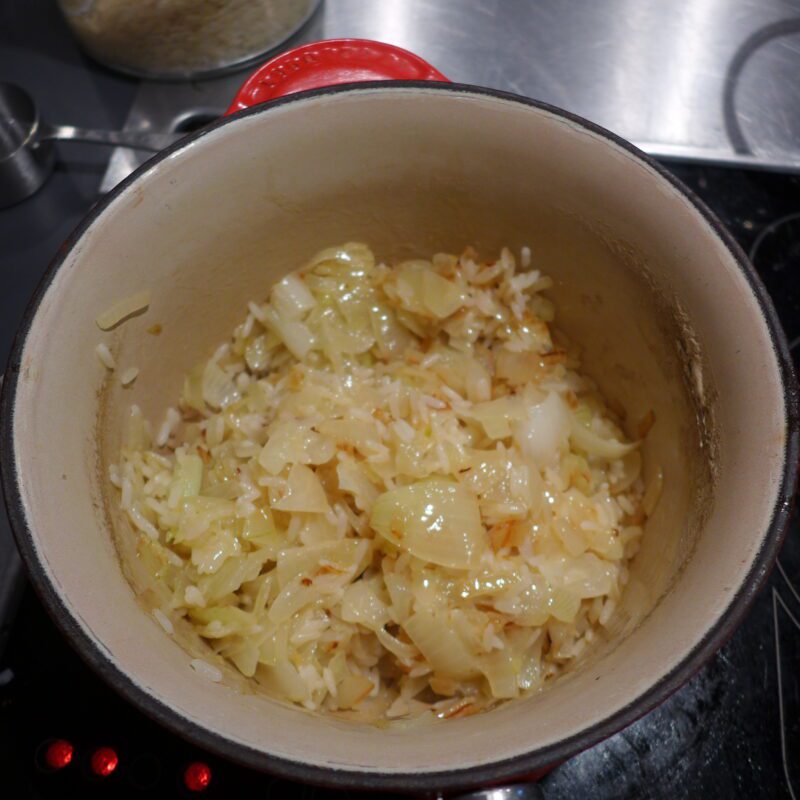
Step # 4: Make the Duxelles
For the duxelles, mushrooms are sautéed with shallots and Madeira with cream added at the end.
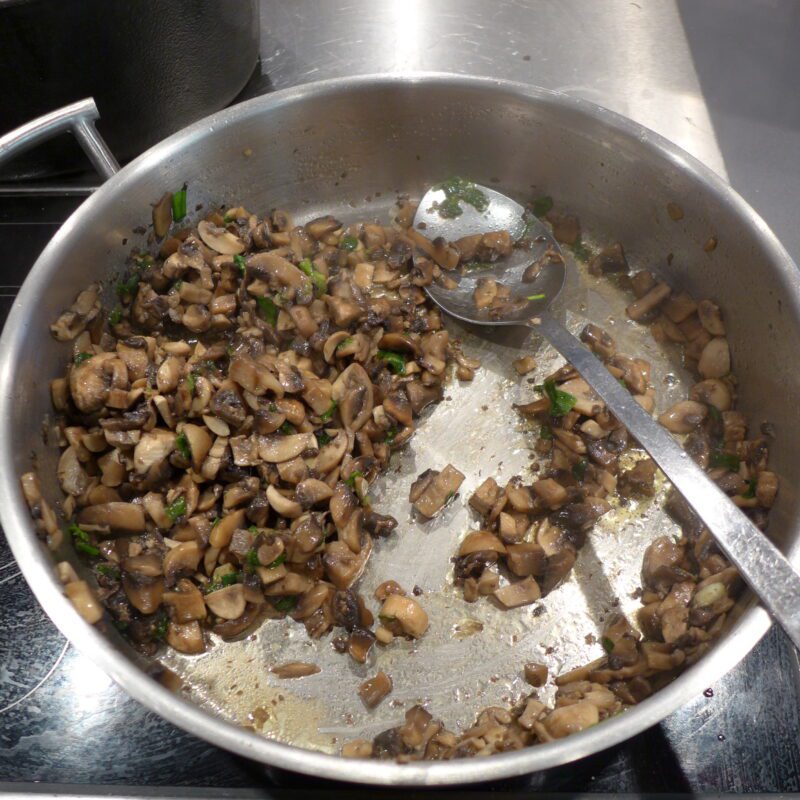
Step # 5: Make the Mornay Sauce
Combine the remaining braising liquid from the veal with milk and flour and cheese to make a creamy sauce.
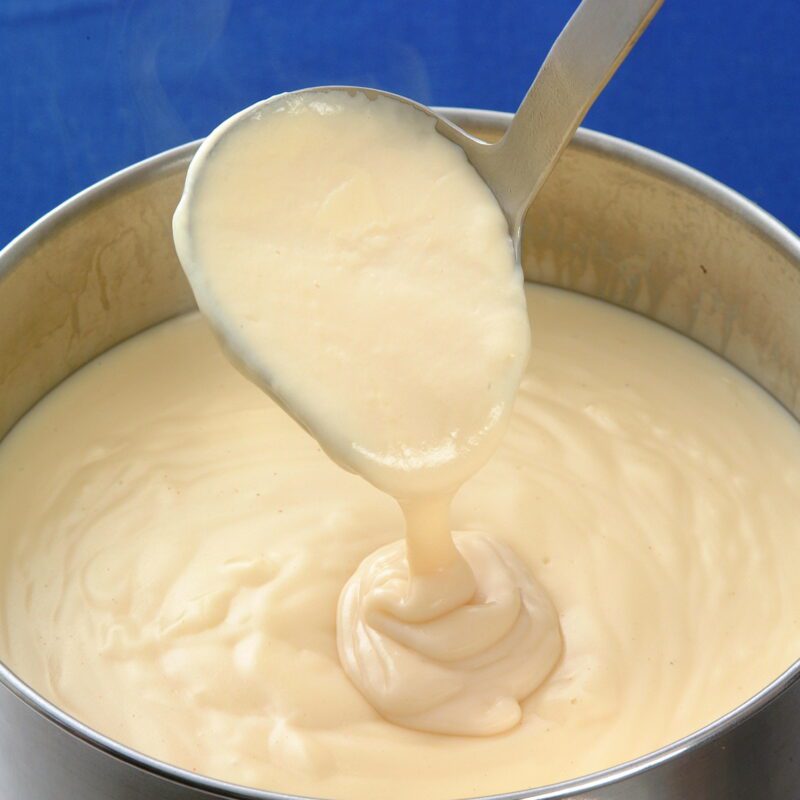
Step # 6: Assemble the Veal
Combine the soubise with the duxelles.
Cut slits of about ¾ of the depth of thickness into the cooled roast at ¾-inch intervals, and spoon the duxelles/soubise mixture between the slices.
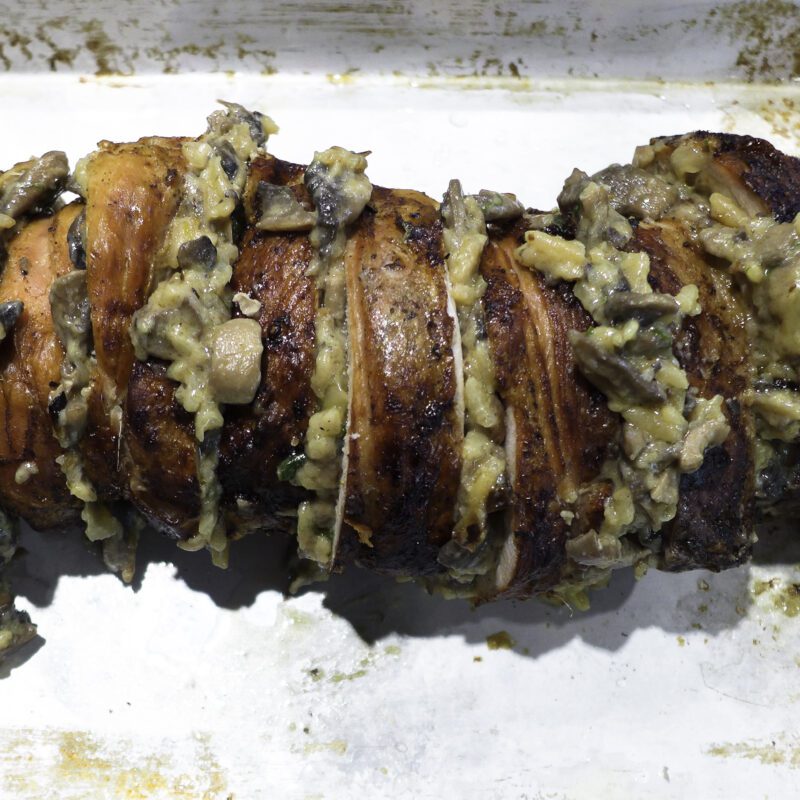
Step # 7: Roast the Veal
Cover the stuffed veal with half of the Mornay Sauce and bake for approximately 25 minutes.
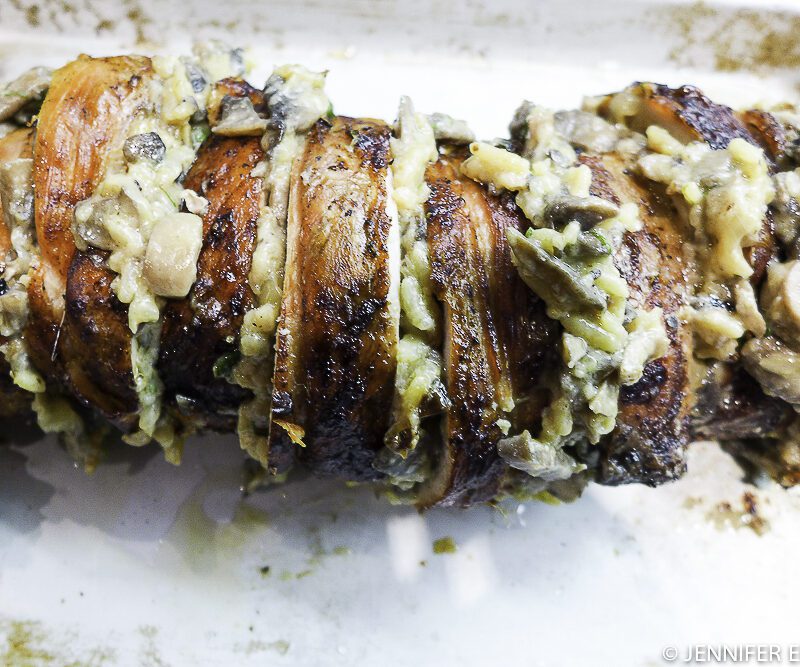
Who Gave Veal Orloff its Name?
Veal Orloff is not an original Russian recipe, though Russians have enthusiastically embraced it as their own. Rather it is part of a panoply of French dishes with Russian twists to them. Just like Beef Stroganoff, Veal Orloff is an entirely French dish, popularized by Chef Urbain Dubois in the Russian embassy in Paris.
I like to think that Chef Dubois was as diplomatic as his master, after whom he named the dish: Prince Nikolay Alexeyevich Orloff (1827-1885), the Russian Ambassador to France.
The Orloffs were a colorful family, who rose to power and Imperial favor during the reign of Catherine the Great.
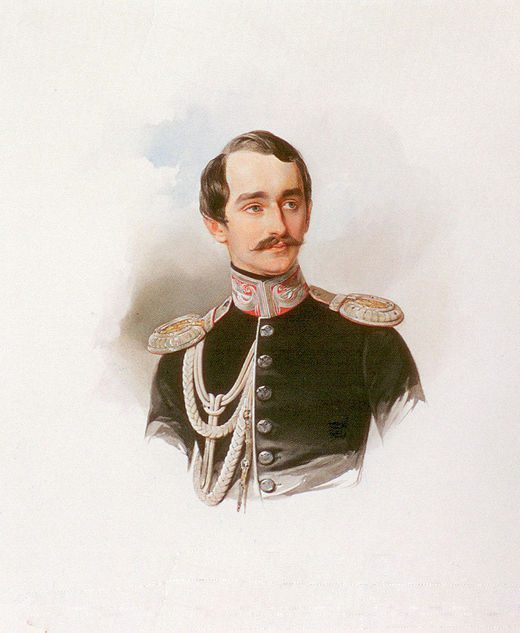
Prince Nikolai Orloff
Prince Nikolay was a much-decorated military commander, writer, thinker, and diplomat, and one of the leading minds of his generation. Though very much part of the innermost Imperial circles, Orloff was a passionate advocate for reform. He welcomed the Abolition of Serfdom in 1861, but immediately began petitioning to end corporal punishment. He served the Tsar as an ambassador in Germany, Belgium, and finally France, where he died and was buried.
But his most lasting legacy is surely culinary!
Veal Orlov

Veal Orloff
Ingredients
The Veal
- 1 gallon of brining solution (water one lemon, cloves, brown sugar and salt)
- 5 lbs boneless veal roast trimmed and tied
- 3 Tbls butter
- 2 Tbls Tbls olive oil
- 2 tsps of salt
- 1 tsp of pepper
- 2 celery ribs roughly chopped
- 2 carrots peeled and roughly chopped
- 1 large yellow onion chopped
- 1 in bouquet garni (bay leaf rosemary sprig, thyme, and Italian flat parsley) tiedcheesecloth
- 2 cup dry white wine and 1of water
Soubise
- 1/3 cup long-grain white rice
- 2 Tbls butter
- 1 lb onions halved lengthwise and thinly sliced crosswise (3 cups)
- 1/2 tsp salt
- 1/2 tsp nutmeg
- 1 cup chicken stock
Duxelles:
- 3 Tbls butter
- 1/4 cup shallots very finely minced
- 2 cup Tbls truffles or 1/3(75 ml) of dried mushrooms
- 1 lb of white button mushrooms stems removed and finely minced.
- 1/3 cup heavy cream
- 1/4 tsp salt
- Black pepper to taste
- 3/4 cup Madeira
Mornay Sauce
- 1 cup whole milk combined with the braising juices
- 1/2 cup heavy cream
- 4 Tbls butter
- 6 Tbls all-purpose flour
- 1/4 cup hard Swiss cheese such as Gruyere
- 1 pinch of nutmeg
- 1/8 tsp cayenne pepper
- 1/2 tsp salt
- Whipping cream
- 2-3 grinds of cracked black pepper
Instructions
Prepare the Veal
- Tie the veal roast into a roll and soak in the brining solution for at least 1 hour. Pat dry and allow the meat to come to room temperature. Salt and pepper generously.
- Pre-heat the oven to 325ºF (165ºC). Melt 2 Tbl (30 ml)of the butter and the olive oil in an oval-shaped Dutch oven. Brown the roast on all sides for 3-4 minutes. Remove veal to a platter. Drain off all but 2 Tbl (30 ml) of the fat, reduce the heat and melt the remaining butter in the Dutch oven.
- Add the onion, carrots, and celery and toss until they are coated. Nestle the veal roast among the vegetables and bouquet garni and pour the wine/water around it. Bring to a gentle simmer, then cover and braise for approximately 75 minutes in the oven until a meat thermometer reads 145º-150ºF (62ºC - 65ºC).
- Transfer the veal to platter and tent with aluminum foil and rest for 30 minutes. Strain the braising juices and reserve.
Soubise
- Cook the rice for 5 minutes, then drain and set aside. Heat the butter in a sauté pan and slowly sweat the onions until they are very soft. Add the stock and rice, cover, and cook for one hour on very low heat or in the oven with the veal.
- When the soubise is fully cooked and most of the liquid has been absorbed, puree it in a food processor fitted with a steel blade.
Duxelles
- Submerge the dried mushrooms in the Madeira and 1/3-cup (75 ml) of hot water and let stand for 25 minutes. Remove the mushrooms with a slotted spoon and strain the liquid through cheesecloth and set aside.
- Melt the butter in a sauté pan, add the shallots and sweat then gently cook the mushrooms until they leach, then re-absorb their moisture. Stir in cream and simmer gently until the mushrooms absorb the cream. Adjust seasoning by adding salt and pepper. Set aside.
Mornay Sauce
- Combine the reserved braising liquid and Madeira, and top up with enough milk for 3 cups (710 ml) of boiling liquid. Melt the butter, and then add the nutmeg and cayenne pepper. Use a metal whisk to combine and brown slightly for 2 minutes. Add the liquid in a slow but steady steam, whisking vigorously to ensure that the mixture is free of lumps. Add the grated cheese, combining thoroughly. Dilute with cream if necessary.
Final Assembly:
- Preheat the oven to 375ºF (190ºC).
- Slice the roast into ¾-inch pieces and lay them out on a cutting board to facilitate re-assembly.
- Add the soubise to the duxelles. Spoon or pipe the mixture in between the veal slices leaving some of the stuffing exposed. Use a wooden skewer to hold the slices together on a buttered roasting pan.
- Heat half of the Mornay sauce and carefully coat the veal and stuffing. Bake for approximately 25 minutes.
- Serve with the remaining Mornay sauce.
Notes
What to Serve with Veal Orloff?
Serve Veal Orloff with new peas, haricot vert, new potatoes, or rice.
I find Veal Orloff pairs equally well with both red and white wines: a crisp Macon Villages would do very well for white, and I would choose a Medoc or Pauillac for the red.
Veal Orloff is very rich, so dessert that follows it should be on the lighter side: fresh berries or sorbet would work very well.

